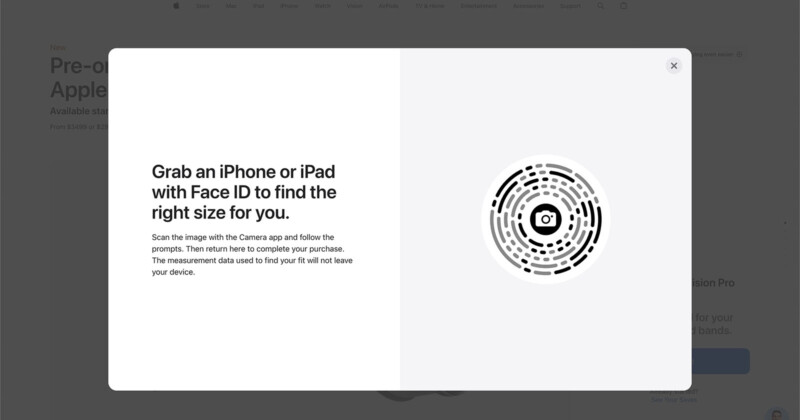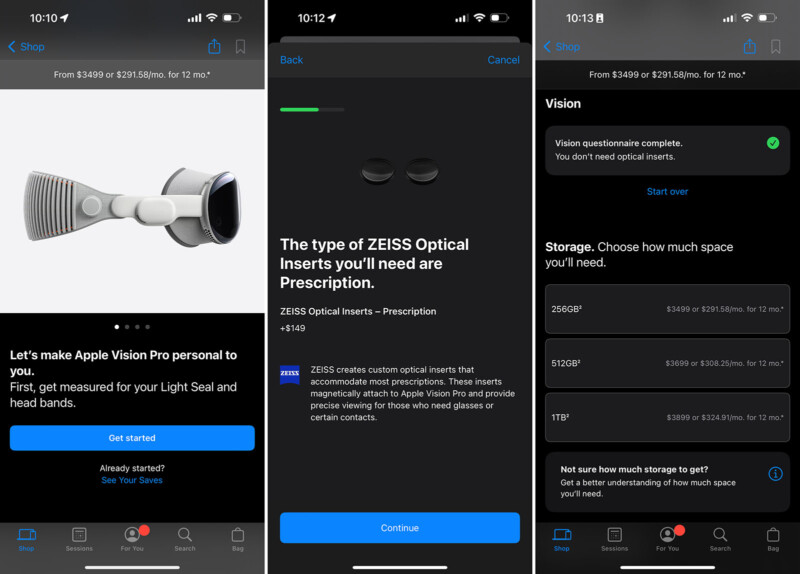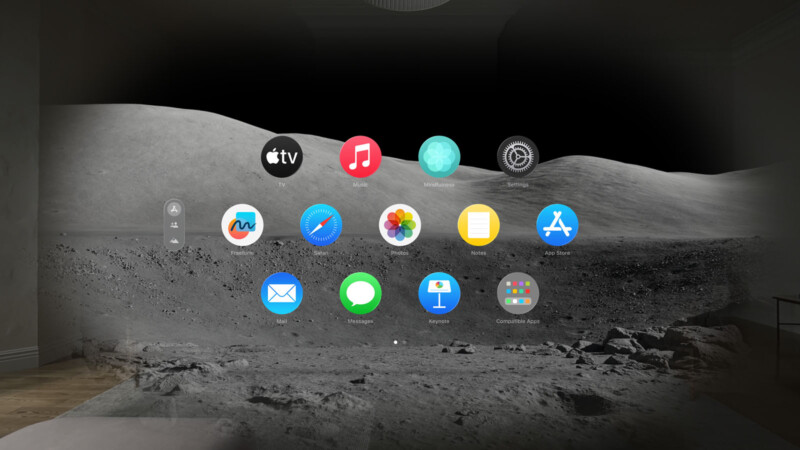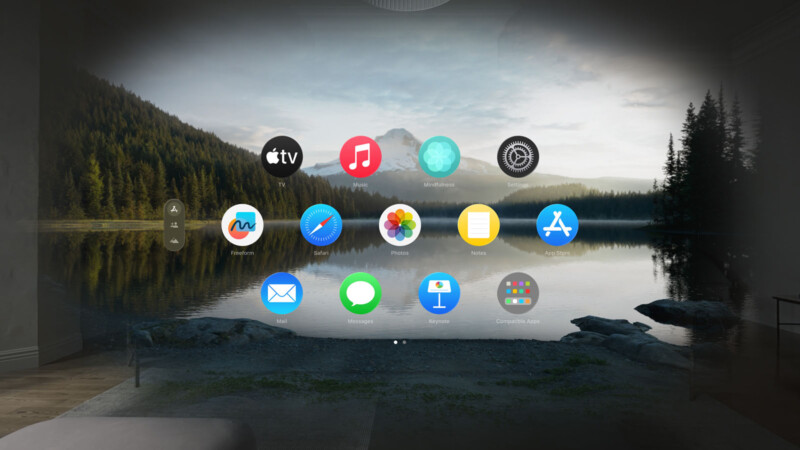![]()
Apple has officially entered the era of spatial computing, with the Vision Pro headset now available for customers to purchase. And being first through the door is not cheap.
Starting at $3,499 for the base model, which comes with 256GB of flash storage, the headset also comes in 512GB and 1TB versions for $3,699 and $3,899, respectively. For customers with vision that requires correction, the compatible Zeiss prescription inserts are $149. There are also “readers” optical inserts available for $99.

The process for ordering the Apple Vision Pro online is quite a bit different than anything Apple has offered. While Apple sells other products with specific fits, like the Apple Watch, customers must use an iPhone or iPad with Face ID to order the Vision Pro because the Apple Store requires users to go through a facial scan before purchasing the Vision Pro.

For what it’s worth, PetaPixel‘s experience trying this was a bit frustrating, but it did work after a couple of tries. Once the app confirms that your head is compatible with Vision Pro, the next step is a vision questionnaire.
If a prospective purchaser requires over-the-counter reading glasses, prescription glasses, prescription monovision lenses, prescription contact lenses with cosmetic features, or prescription hard contacts and prescription glasses, they should purchase the Zeiss Optical Inserts.
People who don’t require vision correction or who wear soft contact lenses to correct their distance vision do not need inserts. More than 60% of American adults require corrective eyewear, so many will add $149 to their Vision Pro purchase.

Apple has a dedicated support article about using Vision Pro with prescriptions and visual conditions. While there’s plenty of good information in there, what is perhaps most interesting is that people with certain vision conditions that affect eye movements — eye movement is vital to the typical navigation within visionOS — can adapt Vision Pro to their needs by using Accessibility features that allow people to use their wrist, head, index finger, or voice to navigate within visionOS. It’s unclear precisely how this will change the overall user experience. Still, it is a potential alternative for people with uncontrolled eye movements, eyelid dropping, or issues with eye alignment.

Back to the ordering process — by now, it is very evident that Apple Vision Pro is a pricey endeavor. Assuming someone wants the base storage, doesn’t require visual correction, and skips the $499 warranty, they can be out the door for $3,499 before tax. However, at the other end of the spectrum, a person who needs prescription inserts and wants the 1TB Vision Pro they’re looking at $4,048. Add the two years of Apple Care+, that’s now $4,547.

By the way, as with other Apple Care+ warranty coverage, while accidental damage is covered, there is a deductible. In the Vision Pro’s case, the deductible for damaging the headset itself is $299, and $29 for replacing included accessories.
Apple also has a travel case on offer for $199. An extra battery is also $199, and so is a replacement — or different-sized — Apple Vision Pro Light Seal. If multiple people want to share a single Vision Pro, they could require different seals and optical inserts. Additional bands come in different sizes and are also $99 each.
“Apple Vision Pro is the ultimate entertainment device,” says Greg Joswiak, Apple’s senior vice president of Worldwide Marketing. “Users can turn any place into the best seat in the house, enjoy personal concerts and adventures with Apple Immersive Video, interact with lifelike prehistoric creatures in Encounter Dinosaurs, and even land on the surface of the moon using Environments. It’s unlike anything users have ever seen before and we can’t wait for them to experience it for themselves.”
![]()
This is far from the first time Apple has ventured into new territory at a high price point. The original iPhone launched in 2007 for $499 and $599 for 4GB and 8GB versions, plus a mandatory two-year contract commitment with AT&T. At the time, this was a considerable sum for a smartphone. The iPad launched for $499 in 2011, long before there was much interest in tablets. Apple Watch started at $350 in 2015. Apple Vision Pro sets the bar much higher, but there is something all four product lines have in common: significant doubt at launch that they will gain a foothold in the consumer technology space.
The iPhone, iPad, and Apple Watch all succeeded despite the disbelief. Will Vision Pro mark a similar success for Apple?
Those not dismayed by the high entry barrier can get in on the ground floor of Apple’s foray into spatial computing at Apple Stores in the United States or using the Apple Store app on a Face ID-equipped device.
Image credits: Apple
